In the valley of the Colosseum
there is a layer of clay under many metres of sand and silt. In prehistoric times the ground level was about 10-15 metres lower than it is today. Rain and water from streams gathered in the valley, and, depending on the season, formed a marsh or a little lake in the depression. From there the waters reached the valley of the Circus Maximus and then the Tiber river.
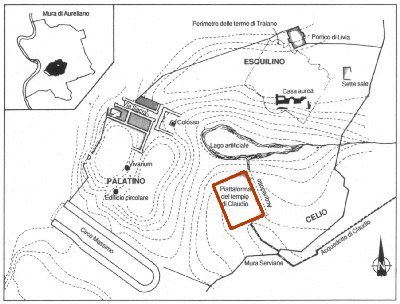
The site had been certainly inhabited, at least since republican times, because remains of many buildings of that epoch have been discovered all around the valley. We know that those buildings were expropriated and demolished after the fire of 64 AD, when Nero decided to make his first residence there (the Domus Transitoria). Where later the Colosseum was built there was a pond, surrounded by buildings and gardens, which we know about from ancient authors.
After Nero’s fall, the new ruler, Vespasian, decided to cancel all memories of the former emperor, and to give back the area of Nero’s mansion to the Roman people, by building an amphitheatre, a public facility.
The site in itself had advantages, but also drawbacks. One of the main problems was the drainage of the site, but at the bottom of Nero’s pond the engineers managed to reach the clay bed that would have supported the foundations. Drainage was guaranteed: it has been calculated that, even though it reaches such a low level, the bottom of the arena remains 10 metres above that of the drain.
Some drillings recently carried out have demonstrated that the site had been reclaimed since archaic times, with a drain that collected the waters as far as to the Circus Maximus Valley.
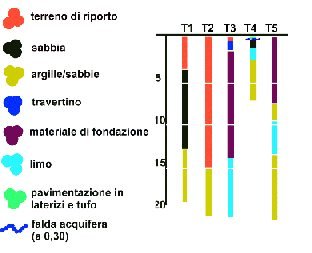

The image above show the sites of the recent survey and the results obtained. The map shows the points of the survey (the T numbers) and also the route of the underground line B, which, as one can see, winds between the Colosseum and the Arch of Constantine (T5). When the excavation for the underground was made in the ’30s, many ancient drains – and probably also the passage between the amphitheatre and the Temple of Venus – were lost. Here are some images of the works (from Raccolta Roma Sparita):
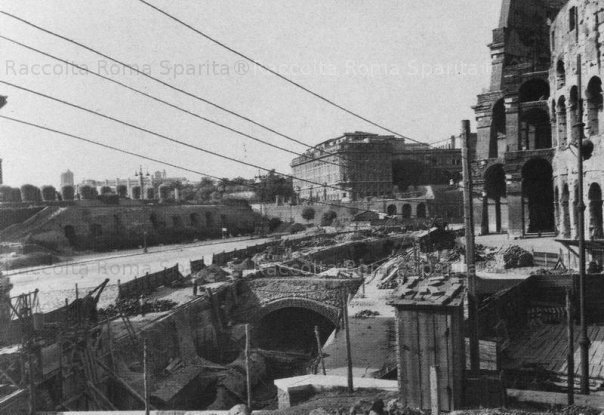
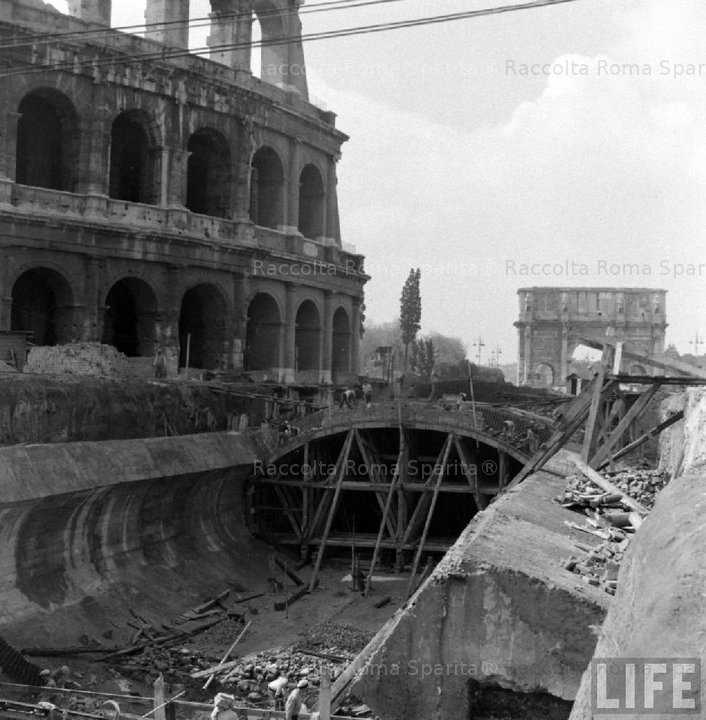
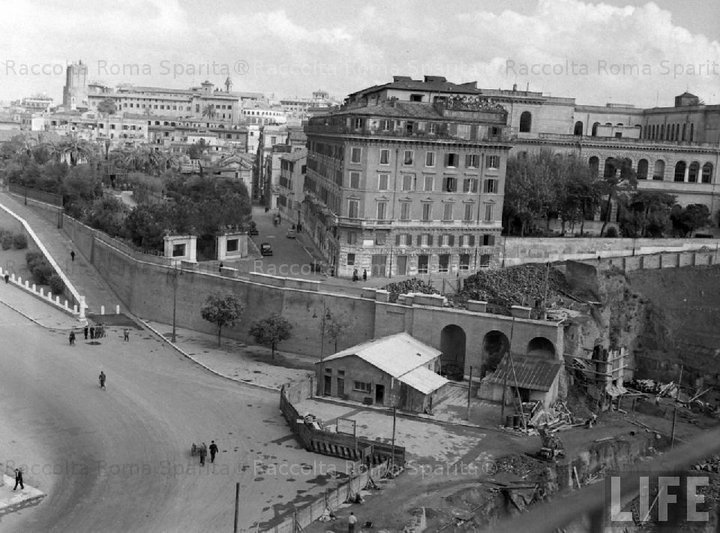
“Construction on the line started in 1937, but was halted when Italy entered the World War II. There were further delays in the construction due to the death of Mussolini and the end of the Fascist regime. In contrast to the construction of Linea A, the construction of Linea B was a lot quicker. The construction was especially fast during the period before the war. Being a dictator, Mussolini only had to answer to himself. By having an imminent deadline of the World Expo, Mussolini pushed the workers to work at an extremely quick pace. He also chose to ignore much of the historical ruins encountered during digging. Due to the nonchalant attitude towards archaeological artifacts, his workers destroyed a lot of significant pieces during the construction process.
Archaeologist believed that much of the base of the ancient palace at the Piazza Bocca della Verita was destroyed and workers also chipped a corner off of the buried foundation of the Coliseum. To further add to their carelessness towards the historical past, much of the marble slabs and relics found were carried off and tossed in the countryside. It is a little surprising that Mussolini cared so little about artifacts uncovered during digging. During his regime, he spent a lot of time and money restoring and excavating the ancient ruins in and around Rome. For example, he restored the abandoned port of Ostia”.
(from https://engineeringrome.wikispaces.com/Subway+System+in+Rome).
For the foundations of the amphitheatre, in the firm clay bed the Flavian engineers excavated an elliptical ring 31 metres wide, 6 metres deep, and filled it with stones and roman cement. Then this foundation was raised for 6 more metres, so that the thickness of this enormous doughnut is about 13 metres. In this way the excavation work for the foundation was reduced and it was replaced with the easier task of building a wall, by furtherly raising the foundations, and by recycling earth and waste materials from the surrounding buildings, which had been demolished.
Click here for a page on the amazing foundations of the Colosseum.
